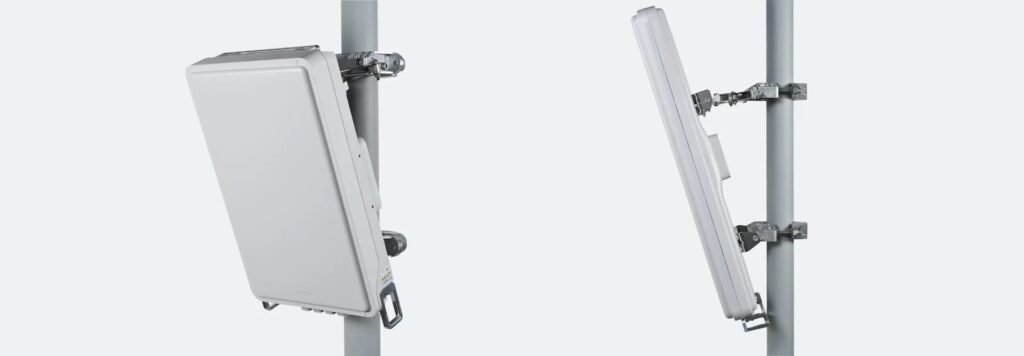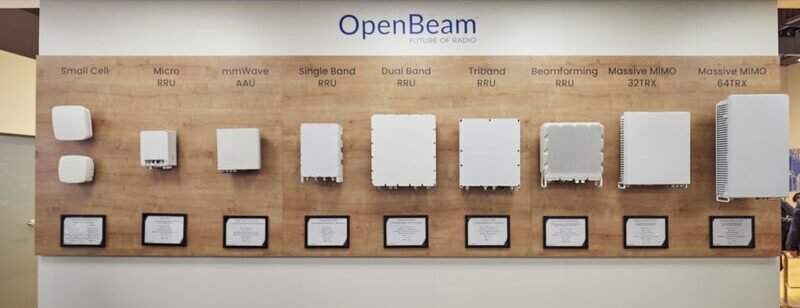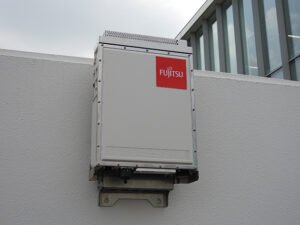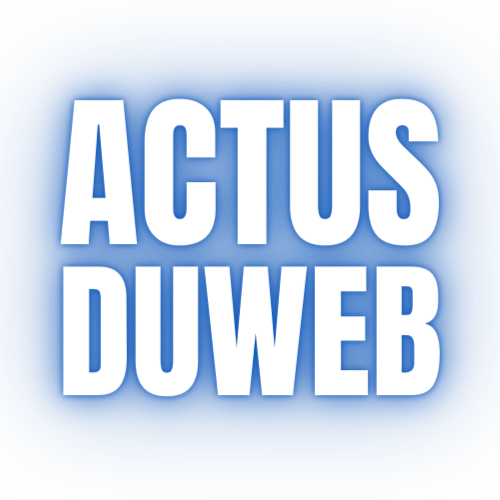Open RAN at the cliff edge? – The Mobile Network
Ericsson is coming around. You will hear the announcement very soon. We have pushed them to the edge. They are about to fall off the cliff. They will succumb. – Dr Femi Adeyemi, Head of Wireless, Fujitsu.
The big players are jumping in. So Samsung is there, Nokia is now jumping in, which is a good thing too. I mean, even Ericsson has started saying, ‘OK, yes, we will do it. But we’ll do it by 2024, 2025.’ But at least nobody’s saying they won’t do it. So that’s actually where the game starts. – Pardeep Kohli, CEO, Mavenir.
When we look at this from a long term vision, we see that the NG LLS will be the interface that we will use for our radios across our portfolio going forward. Marten Lerner, Head of Cloud RAN Product Line, Ericsson.
So we’ve developed according to the specifications of the O-RAN Alliance, okay. That is done. So anybody that’s actually developed according to that specification, they’re quite welcome to connect. Adrian Hazon, VP Global Product Sales, Nokia.
Jumping in
As you see from the quotes above, Kohli and Adeyemi are both convinced that the big vendors are falling in behind Open RAN. The vendors seem to agree.
Nokia, which Kohli mentions, has just won a contract to provide the baseband (CU-DU) element of an unspecified scale deployment at DTs O-RAN town in Germany. Mavenir is providing its Open BEAM massive MIMO RUs to DT for Open RAN deployments (again unspecified) in two of its operating countries outside Germany.
Mavenirs SVP Business Development, John Baker, sees this as evidence that things are changing, and that the major vendors are taking steps to become O-RAN compliant.
I think the industry is coalescing in a certain direction. With Deutsche Telekom Nokia will be supporting other peoples radios from their baseband, and Fujitsu will keep them straight on the interface. We have done this for Dish with our baseband and Fujitsus radios. If Nokia does achieve that they will be Open RAN compliant in their baseband, Baker said.
Even though these are small scale deployments, they are commercial, and everyone starts small, as Baker says. Not only that, DT needs to up its vendor diversity. It is facing increased pressure in Germany over its Huawei infrastructure, and having previously replaced Nokia with Ericsson it is currently looking at moving Nokia back in. Things do flex.
Ericsson replaced Nokia a few years ago in Germany and now it is the incumbent and Nokia is the challenger. It gives DT a diversity and an open-ness, Baker said. Rumours are rife that another major brownfield Group operator is about to announce a new Open RAN deployment and vendor alignment in a European market. Cloud RAN platforms that deploy vRAN as software, with open interfaces between the Radio Units and the baseband, and between baseband, RIC and SMO functions, give the promise of greater flexibility in the network.
Before, if you signed a contract you were there forever, but in the future theres no assurance you will be, Baker said.
Mavenirs Kohli: The good thing is that European CTOs all said that from 2025 and beyond anything we buy will be Open RAN compliant. That itself sets the bar. There can be 18 months of gameplay but after that he trails off.
But we are not yet at a world where the vendors are fully open. Nokias deployment in Germany opens its baseband to anothers RU. It is yet to have deployed its open RU to another baseband over the O-RAN fronthaul interface. Will it?
The market will really kick off once Nokia and Ericsson open their radios, Baker says, because then you are really competing on baseband functionality.
What do Ericsson and Nokia actually say about their own intentions?
Ericssons answer may surprise. But first some background. O-RAN members defined the interface between the Radio Unit and the DU-CU (baseband) known as Open Fronthaul (O-FH). This was an implementation of a lower layer split in the radio. Ericsson didnt join in. Then it said it wanted it to support enhancements to enable enhanced mobility use cases in Massive MIMO. It proposed this as a separate split, 7.3, over and above the 7.2 split that OFH defines. This is what TMN broke the news on a year ago.
A recent vote at the O-RAN Alliance accepted Ericssons technical enhancements but, crucially, not as a separate split. Instead it is included as CatC of the existing O-FH interface. Also crucially, anyone integrating CatC must also provide backwards compatibility to CatA and CatB (the existing versions). CatC moves some elements of channel estimation and beam calculation from the DU to the RU, so that faster calculations can be supported when channel conditions are changing such as a user moving fast through a cell. So Ericsson can have its preferred version, but it must also support the earlier versions. In theory.
Now back to Ericsson.
We are now going all in on making sure that this is the long term portfolio of Ericsson based on the split that has been defined.
Its head of Cloud RAN, Mrten Lerner says that now the O-RAN Alliance has adopted Ericssons proposal to enhance the Open FH interface, the vendor will support the O-RAN interface.
I guess there was a bit of a perception problem that we had that Ericsson was not fully in the open lower layer split. I think overall we have said that we need performance – that’s key for our customers. As part of this evolution we see we can get performance introduced in the new specifications, so we are then able to adapt the lower layer splits. We are communicating that we see NG LLS, as we call it, as the future for us.
So that means that on the lower layer split we’re introducing the Next Generation open LLS, which is the evolution of the O-RAN split. And we’re also introducing the open interfaces on the management side – so northbound utilising both A1 and O1.
When we look at this from a long term vision, now, we see that the NG LLS will be the interface that we will use for our radios across our portfolio going forward. So this is will of course not happen from day one, we have a lot of installed base that we need to take care of and all of that. But the long term vision is that the interface we will have between the compute side, and the radios will be NG LLS.
So this is our way of saying that we are not we’re not half in on LLS , we’re not doing that as some innovation track on the side. We are now going all in on making sure that this is the long term portfolio of Ericsson based on the splits that has been defined.

Ericsson’s new triple band radio – the triple band 4485.
This is important because, Lerner says, for Ericsson its not just about a split here or there, as we saw in a piece on Cloud RAN, it wants to have a common strategy between open and integrated, and Cloud and Ericsson-compute RAN.
Lerner: Basically, what we’re saying is that we also see this as being something that we can bring into the total evolution of how Ericsson is moving forward.
The test for Ericsson will be if its support for what it terms NG LLS really speaking CatC of O-RAN Open Fronthaul – will indeed see it support a truly open interface between its RUs and other basebands, and vice versa.
its like putting an engine in a car. You can’t just drop the engine in just because you made an engine, right? Youve got to do the integration work, configuring the profile. That is why you haven’t seen a great proliferation of radios in the marketplace that can just do that
NOKIA, Yes, but…?
So then, what of Nokia? Its DU is connecting to Fujitsus RU in Germany, we havent yet seen its RU deployed with anothers DU, aside from an early custom integration for Rakuten that is being phased out.
So does Nokia support the Open RU? In essence and this is a paraphrase – it says, Yes, but its not as simple as that
Head of Sales Adrian Hazon: We do support open fronthaul in the latest generations of ReefShark based products that we do. One thing I would urge you to be very cautious about is just because you support Open Fronthaul doesn’t negate the need to that you don’t push it.
So the profile specification for the open front was very well defined, okay. But you have to remember, there’s an awful lot of parameters in that profile, which require an awful lot of you have to set the right parameters for that radio, for that baseband, for that environment. You have to know what youre doing. Connecting radio to baseband is not an easy thing to do, particularly without fracturing the processing required for massive MIMO or beam forming.

Nokia Airscale Antennas: it says integrating RU-DU is like dropping an engine into a car.
That sounds like a hedge. Does Nokia actually support the interface?
Weve developed according to the specifications of the O-RAN Alliance, okay. That is done. So anybody that’s actually developed according to that specification, they’re quite welcome to connect. But its like putting an engine in a car. You can’t just drop the engine in just because you made an engine, right? Youve got to do the integration work, configuring the profile. That is why you haven’t seen a great proliferation of radios in the marketplace that can just do that.
Mavenirs Kohli does actually agree with that, to a point: he doesnt think integration should be a blocker, and says that the time to verify product interoperability has reduced substantially and is still reducing.
For two vendors you cant say it just hooks in, it has not reached that stage, but it is shrinking. It used to take us a year to certify and now it is done in six weeks.
Technology alignment for O-RUs
However, when it comes to the lack of available RUs, he identifies a different issue than integration and parameter configuration. For him it is more about meeting the diversity of band requirements that operators have across different countries. That has been something the incumbent vendors have had the scale to do, and has proved more difficult for the upstart players.

Mavenir’s OpenBeam radio portfolio
Kohli: It’s not a technology issue any more, but every country has its own set of bands and theres not an open market created yet for these radios. We cant build every radio everybody wants, we will build where we have clear visibility. So if you want something done in 2025, start telling us now, so we can work on that and be ready when you need it. If somebody wakes up in January 2025 and says they want them by August, all they will have is incumbents unless they give us visibility up front. That is what we are asking for. We can take a year to get ready and then we can have an open game but of course it still doesnt mean we will get selected.
 Fujitsus Adeyemi he of the clifftop – a year ago was singing a similar tune. We cant develop a product for an order of 50 units, he told TMN. But this year he sees a much greater momentum.
Fujitsus Adeyemi he of the clifftop – a year ago was singing a similar tune. We cant develop a product for an order of 50 units, he told TMN. But this year he sees a much greater momentum.
We have completed with Samsung the first integration of a Massive MIMO radio that can do Multi User MIMO, and KDDI has started rolling that out in many cities. Were doing a lot of Massive MIMO trials in 2023 in the US and Canada, in readiness for 2024. We continue to support Dish.
For Dish Fujitsu has developed a second phase product, a dual band (66 & 70) radio with multiple carriers, and a tri-band radio for its lower bands. They attach it to the antenna, one above, one below, so that they can minimise the square footage.
Then theres a 32T32R antenna that is with KDDI and that is also in trials in the USA. A second generation 64T64R product has 16 layers on the downlink and eight on the uplink, and 200MHz OBW.
Weve figured out a number of things from the first generation. It was using FPGA, now we will use DSPs so that we can support additional functions and features in the future. We are evaluating Marvell, ADI, Qualcomm. I am interested in 200MHz OBS at 64T64R. Marvell can do 200MHz at 32 so I would need two of their chips. They are convincing me they would be low power, compact, but Qualcomm would only use one chip to support what we are looking for so we are evaluating both. But at the system level DSPs are very attractive. Its small and you can change the code.
Frontahul, 7.2 or Ericsson 7.3, I dont really care. As long as I have DSPs I can rewrite the code so we are prepared for that. Ericsson has a lot of footprint but I keep hearing about it [the shift to Open fronthaul support] – I want to be prepared for it.
They cant not [open up]. The momentum is too much. They have to. Its not sustainable because globally governments are interested in diversifying the supply chain. We are now at the point where network infrastructure is critical, so the era of having one supplier cannot continue. Their DU to other RUs, their RU to other DUs DT just announced Nokia DU and our RU, so they are already changing.
The traditional vendors may well be at Open RAN’s cliff edge, but it’s not yet clear how soft the landing will be, and what happens to those doing the chasing. If Butch and Sundance, or Nokia and Ericsson if you prefer, have timed it right, they land softly. And the others are left to descend the way they came. Either way, the game begins…
